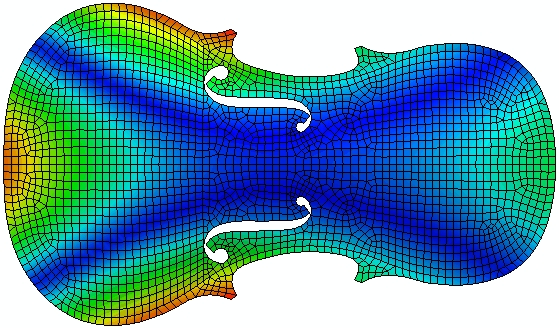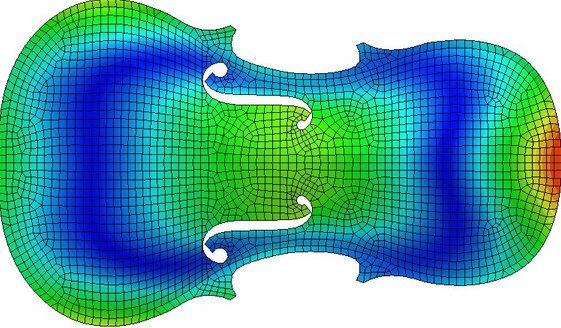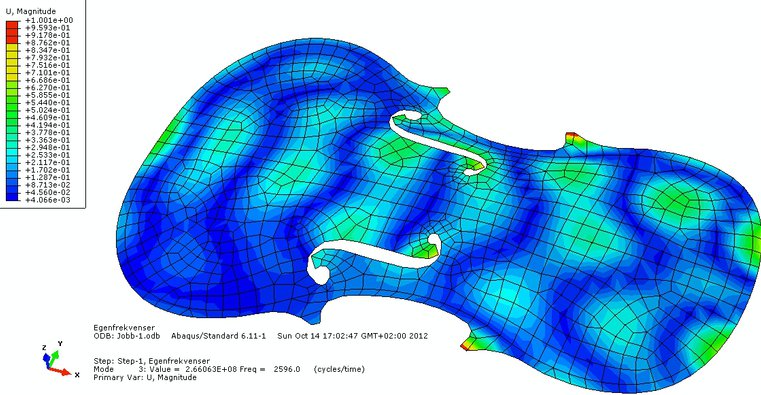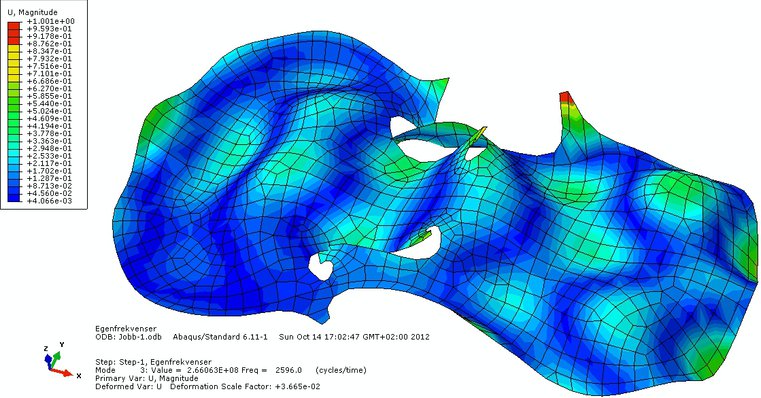Violin analysis
Prof. Peter Carlsson
Prof. Mats Tinnsten
Mid Sweden University


Violin research through numerical analysis might give a clue!
The top is considered to be one of the most important parts of the violin when it comes to sound production. A lot of work is spent on the top in order to make it perfect. But besides the practical experience of violin making, numerical calculations might also give hints on how to make good tops from carefully chosen blanks.
It is possible to change the vibration properties, as mode shapes and eigenfrequencies, and the characteristics of the sound emanating from a vibrating structure by changing structural design variables such as geometric dimensions, shell thickness, and material parameters. Of course, changes to one or more of these variables will results in changes to other structural characteristics. To find the best design, i.e. the one that satisfies all the demands put upon is a question of optimization.
The use of numerical analyses also makes it possible to vary only one parameter while all other are held constant.

Figure above shows an example of the second mode, the so called X-mode for the violin top. The boundary condition is free-free.

Figure above shows an example of the fifth mode, the so called ring mode for the violin top. The boundary condition is free-free.

Violin top at 2596 Hz.

Violin top at 2596 Hz.
Copyright © All Rights Reserved